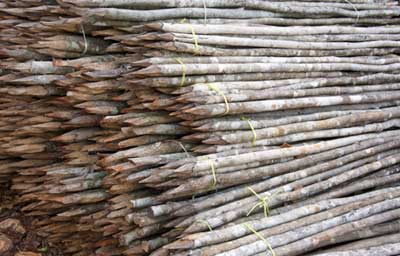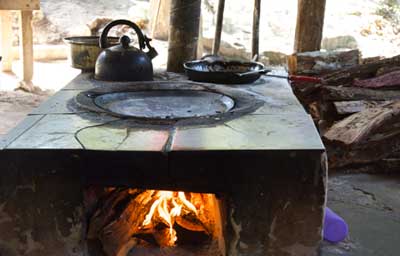Pago por Servicios Ambientales y un cambio de visión, La Mancolona

La Reserva de la Biosfera Calakmul fue declarada como tal en 1989, pero en esos años aún quedaba un desafío por resolver, ya que dentro del polígono de la reserva se encontraba una comunidad. Sus habitantes de origen tzeltal habían llegado desde Chiapas hacía unos años, y el gobierno les ofreció una serie de incentivos si aceptaban la reubicación de la comunidad. Fue así como en el año 1993, cuarenta y tres familias se trasladaron hacia lo que había sido un campamento chiclero llamado La Mancolona, y fundaron una nueva comunidad. El gobierno le entregó 50 hectáreas a cada familia, y por su tradición de trabajo en la milpa comenzaron a abrir parcelas para cultivar, y ese fue un inicio de transformación de una selva con alta biodiversidad que comenzaba a transitar hacia la fragmentación. Pero fue necesario poco tiempo para descubrir que el suelo no era apto para una agricultura comercial y apenas alcanzaba para autoconsumo. Todo parecía indicar que lo más apropiado era apuntar hacia un paisaje manejado que contemplara la conservación de los recursos naturales más que un destino agrícola. Sin embargo, eso implicaba un cambio de visión muy profundo para sus habitantes. Finalmente, con el acompañamiento de asesores técnicos y la implementación de incentivos para la conservación, mujeres y hombres con gran sentido de colaboración se involucraron en una propuesta que confirmó lo acertado del nuevo nombre de la comunidad: Unión 20 de Junio. “Cuando la comunidad descubre que los suelos no eran productivos se generó un sentimiento de frustración”, explica Juan Alberto Villaseñor de DICOS AC. Ante esa situación, comenzaron a llegar organizaciones con propuestas para la conservación, pero esto generaba desconfianza, pues ya habían sido reubicados una vez para la creación de una reserva, y temían que comprometiéndose con actividades de conservación se podrían ver limitados sus medios de vida. Además existían aspectos culturales muy arraigados, como cuentan los comunitarios, por ejemplo en ellos estaba la creencia de que un hombre es realmente hombre si voltea al menos 20 hectáreas de selva para hacer milpa. Cambiar esa visión fue todo un desafío. A través de capacitaciones y talleres, la comunidad se comienza a dar cuenta de que la conservación de los recursos naturales es una alternativa de manejo del paisaje que tiene el potencial de ser una fuente de ingresos económicos, además de los beneficios que brinda la selva como proveedor de frutas para el ser humano y la fauna, materiales para la construcción, plantas medicinales, protección ante huracanes, entre otros servicios ecosistémicos. La gente comenzó poco a poco a apropiarse de esos conocimientos, de los beneficios en la calidad del aire, del agua, de la presencia de flores benéficas para la producción de miel, el aprovechamiento del árbol de la pimienta y la oportunidad de ofrecer servicios de ecoturismo. Como consecuencia de este cambio de visión, la comunidad comenzó a recibir incentivos económicos, como programas de Pago por Servicios Ambientales (PSA), y de esa manera se comenzó a gestar un mayor sentido de pertenencia con la selva y una revalorización de los recursos con que cuenta la comunidad. Para el caso del programa de PSA, DICOS AC es el responsable técnico ante CONAFOR, y su responsabilidad es presentar las solicitudes de renovación, elaborar informes y dar seguimiento a los trabajos de campo y garantizar de que los compromisos asumidos se cumplan. La comunidad tiene a su cargo la limpieza de brechas corta fuego, colocación de nidos y bebederos para la fauna, colocación de letreros que indiquen la prohibición de cacería, tala ilegal, extracción de flora y fauna, y en caso de que exista ganado en la zona de influencia instalan cercos de protección para que no haya pastoreo dentro del predio. En el año 2013, en la comunidad se comenzó a trabajar con un proyecto de ecoturismo. Julio López, guía naturalista de la comunidad, cuenta que desde hace dos años reciben a estudiantes de Inglaterra, Bélgica y universidades nacionales que se quedan cinco o seis semanas para hacer monitoreo de biodiversidad. “Aquí la gente sabe que los recursos naturales con los que cuenta tienen un gran potencial”, explica Julio. “Mucho del éxito del rumbo que ha tomado el manejo del paisaje donde predomina una selva en buen estado de conservación es por cómo está organizada la comunidad, el interés que sus habitantes tienen por el trabajo conjunto y un fuerte sentido de colaboración”, explica Juan Alberto. “Esto nos brinda la oportunidad de guiarlos en el buen manejo de la bosque. En el primer taller nos centramos en definir qué es el bosque y los servicios que brinda, y nos dimos cuenta de que ellos ya saben de qué se trata, simplemente por vivir en contacto con la selva. Pero nuestra tarea fue ordenar esas ideas, y después fueron ellos mismos quienes solicitaban distintos temas para las siguientes capacitaciones. “Los talleres siempre fueron muy participativos y con una actitud positiva por aprender”, dice Juan Alberto. Aquí las decisiones se toman entre todos, y participan con igualdad mujeres y hombres. Esta comunidad se caracteriza por el trabajo comunitario y la buena organización.
Un punto clave fue que los habitantes de La Mancolona (Unión 20 de Junio), supieron reinvertir los ingresos del PSA. “Si bien una parte fue para cubrir sus necesidades básicas, destinaron un porcentaje para habilitar sus apiarios, otros en construir jagüeyes (aguadas) y algunos en proyectos turísticos”, comenta Juan Alberto. “Todas estas son inversiones que les puede seguir redituando más allá de los incentivos económicos que reciban por algún programa, y la gente entendió que mantener un paisaje manejado con tendencia a conservar la biodiversidad no significa que no puedan hacer nada con el bosque, sino que pueden hacer aprovechamiento y recibir incentivos si lo hacen bien”. La experiencia de La Mancolona resulta aleccionadora, y una vez más demuestra cómo las decisiones que definen el destino de un paisaje están en manos de sus propios habitantes y organizaciones que trabajan a ese nivel. Organizaciones acompañantes fuertemente comprometidas, y una comunidad con alta cohesión social y sentido de colaboración, lograron cambiar el rumbo de un manejo que parecía llevar ineludiblemente hacia un deterioro creciente de los recursos y la economía de su comunidad, y construyeron una visión común para que la selva les provea recursos de manera integral y sostener sus medios de vida en un paisaje donde predomina la selva. |




















